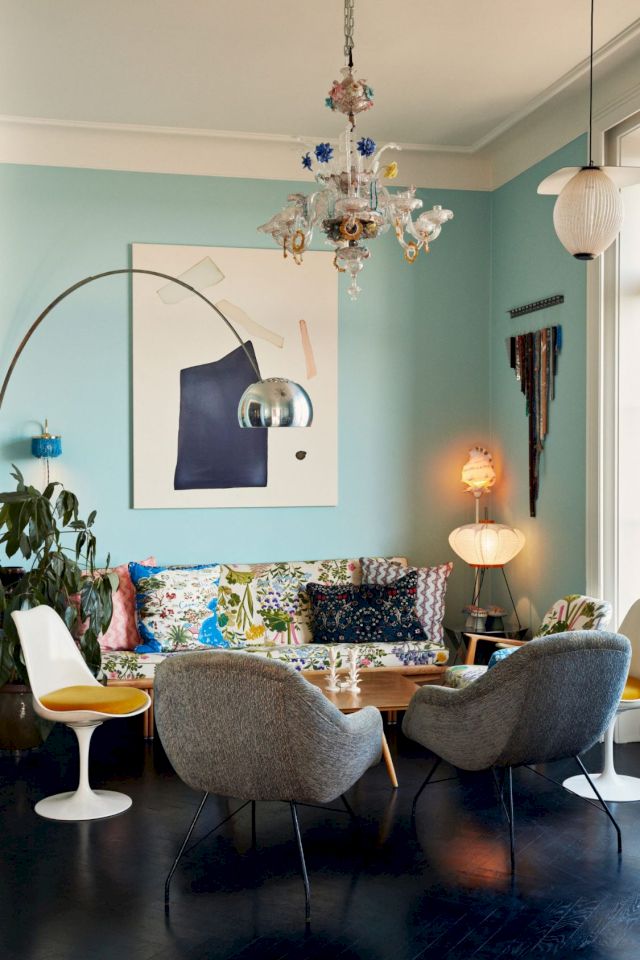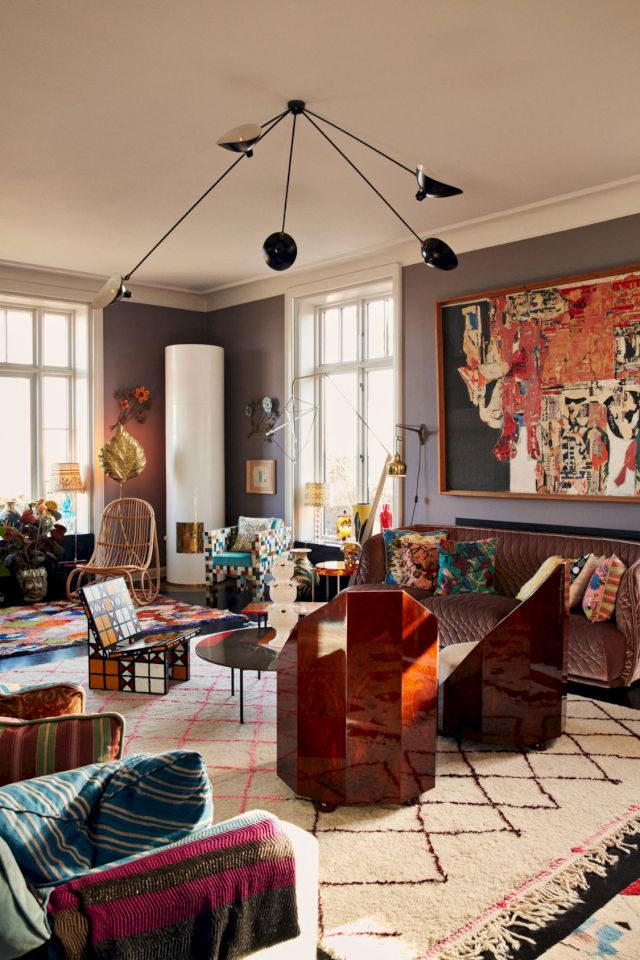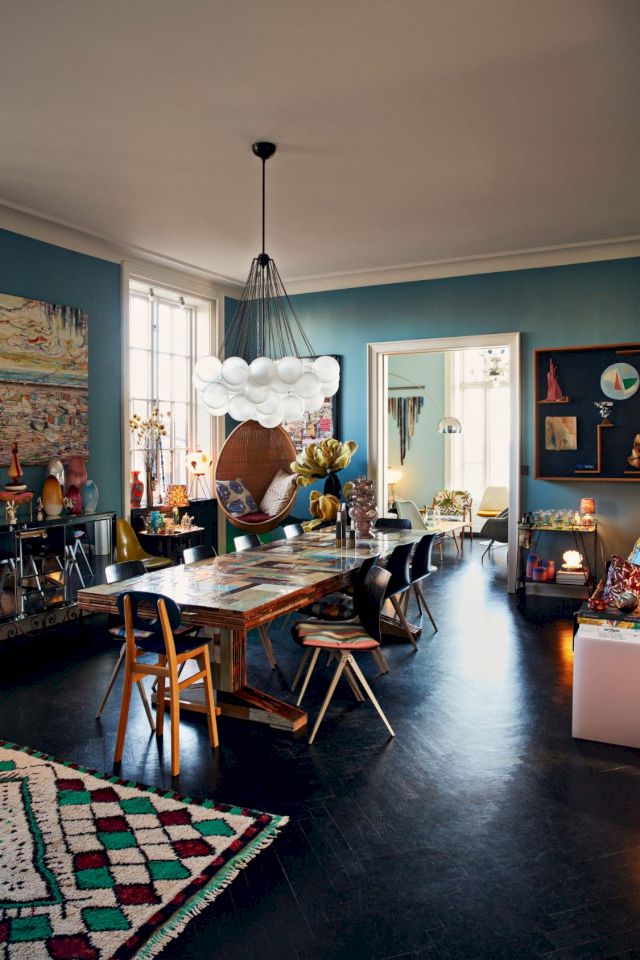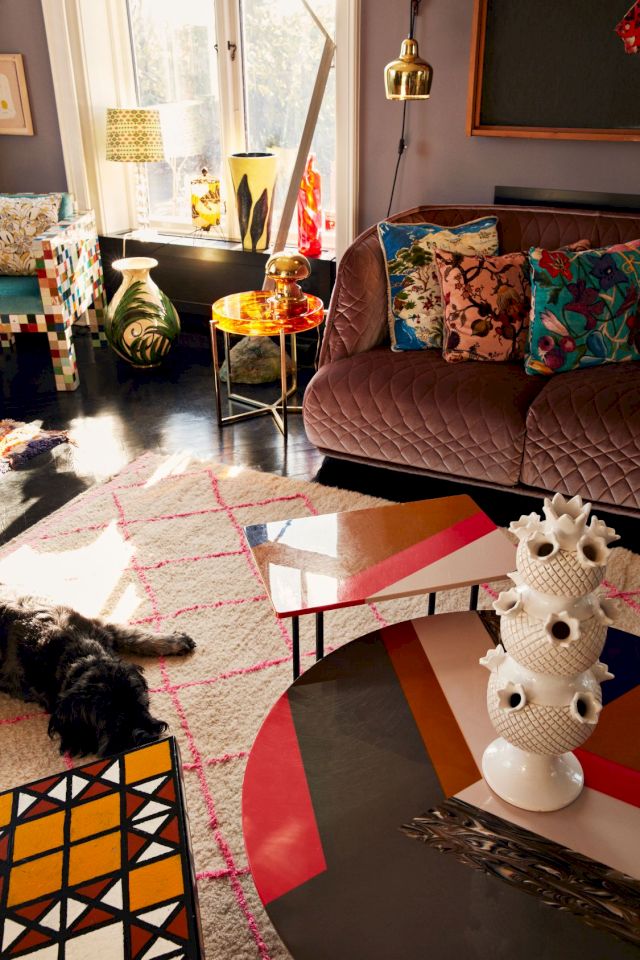Independent Collectors
Barbara Maj Husted Werner
An interview with the collector combining art with the everyday life.

Meet the Danish collector mixing art and everyday life, fashion and contemporary art all under the roof of her lively and stylish home.
Barbara Maj Husted Werner’s eye for detail not only enables her passion of collecting contemporary art, but is a way of life. Owner of the luxury fashion store in the heart of Copenhagen, HOLLY GOLIGHTLY, Barbara Maj Husted Werner uses her keen sense of style and taste to select pieces for her successful store as well as growing her own private collection of art, objects and furniture.
Making sure that the collection is not only lived with but also used and enjoyed everyday, Husted Werner’s trained eye for key pieces means that she is always looking for and acquiring works, and often from unlikely places. Here, we speak to Husted Werner about her collection, the process behind the selection of the works, and if she thinks she’ll ever stop collecting.
IC
How did your interest in art and collecting art start?
BARBARA MAJ HUSTED WERNER
I think I was always very interested in the visual side of life, with my fascination first starting off with fashion and clothing. I subscribed to Vogue when I was fourteen years old and for me, working with fashion now is something that has to do with art but in a different way. My husband is a film director which means he is also very interested in the visual and I think together we find a mutual interest when looking for art and furniture. Our passion for collecting started when we started earning, after we had finished school. When I was in school I had seen art and studied art but I couldn’t actually begin to collect until I could afford things to collect.
IC
So you would say it was through working with fashion that your interest in art was sparked again?
BARBARA MAJ HUSTED WERNER
I think it’s something that’s just a natural interest of mine. Nowadays it’s more like a hobby, but I’ve always enjoyed art and of course I began to get more and more interested in it when I went to art school and was able to study it in more depth. It was also when I started going to more exhibitions and museum shows. I think that’s probably more of the reason why, rather than my solely my career in fashion.
IC
Do you remember the very first artwork you bought?
BARBARA MAJ HUSTED WERNER
I don’t think I remember the very first piece but I think it was probably from a Danish gallery. I do remember the first significant piece that I bought which was an Anselm Reyle painting at a charity auction organized by Olafur Eliasson in Copenhagen. I also bought a piece by Olafur quite early on that I am still very fond of.
IC
What do you mean by more “significant”?
BARBARA MAJ HUSTED WERNER
I mean because for me at that time this work was quite price heavy, but they turned out to be worth their value. It has also been fun to see the career of the artists over the years develop.


IC
What I find interesting about how you collect is that you really enjoy to mix art with objects and design pieces.
BARBARA MAJ HUSTED WERNER
Yes absolutely! I don’t have any boundaries about what I can or cannot put next to each other. I love mixing everything in life, both art pieces, precious and inexpensive. I like mixing eras in clothing, furniture and art and I believe that restriction is the enemy of creative experimenting. I really believe in sharing art in the public space, to share it with other people, and that is why I have art in my clothing shop. Some visitors don’t understand that they can’t buy the artworks that are on display, but I feel that it doesn’t all need to be for sale. It can be so that if someone is in the shop with their partner or friend and they are not so interested in clothing, they can come to the store and have an experience and perhaps be challenged by the artwork that they see.
IC
Looking at the photos from inside your home, you clearly love to live with artworks. What is it about having them surrounding you and your day-to-day life that you enjoy so much?
BARBARA MAJ HUSTED WERNER
I don’t live in a museum and I don’t want my home to imitate that of a museum. I’m not a professional collector, I’m just someone who has a hobby and I want that my four children can do what they want in their own home. That’s actually one of the reasons why I didn’t buy fragile work earlier on, because the kids were small and I didn’t want to limit the way that they move in their home. I wouldn’t buy something that couldn’t be used, touched or hung.
IC
I think it’s important to highlight that, as many people do not realize that living with art can have its complications sometimes!
BARBARA MAJ HUSTED WERNER
Yes! If I lived by myself somewhere I would maybe buy some more fragile pieces but in my life right now, that’s just not the case. That also applies to other objects too – I wouldn’t buy an expensive Murano glass and not drink from it, nor my children, so if it breaks, well then it breaks. That’s what happens. The people who see art as merely decoration are missing the point. You must be moved beyond the fast pleasure of beauty and if it is really good it makes you think about life in a new way.
I wouldn't buy something that couldn't be used, touched or hung.
BARBARA MAJ HUSTED WERNER
IC
How important is it for you to follow the careers of the artists that you buy?
BARBARA MAJ HUSTED WERNER
There are specific artists that I really like to follow that I do have several pieces by, and it doesn’t bother me to buy the same artists twice. It’s nice to have a relationship with the work and the evolution of the work, and that’s why I enjoy it when you buy something from one artist and then five years later they produce new work and it is completely different. I also enjoy getting to know some of the artists I collect, which is made possible by galleries and fairs and a small town art scene like the Danish and also by the Danish collectors association, that arrange very good studio visits.
IC
Are there over arching themes within the collection?
BARBARA MAJ HUSTED WERNER
It’s very evident that I like colors, but I’m not sure if that is a theme or not. It is also rich with texture too.
IC
What is the process behind how you find artists and artworks?
BARBARA MAJ HUSTED WERNER
I try to go to as many exhibitions of artists that I am interested in as possible in Denmark, and I also happily travel for shows and art fairs in Europe. Maybe I can’t do this as much as I would like to do, but I always make sure to go to Art Basel because that’s a good place to get a good overview of what’s going on.
IC
Do you mainly use the fairs to purchase or is it more for research?
BARBARA MAJ HUSTED WERNER
I do usually buy works at these fairs, maybe just one or two pieces, but not every time.


IC
Is it important for you to have a relationship with the artists that are included in your collection?
BARBARA MAJ HUSTED WERNER
No, that would just be a perk. It’s not something that’s important for me it. If it happens it happens. Obviously in the fairs I don’t meet many artists as they usually do not go there, however if I was in a gallery then I would of course get the chance to meet them.
IC
You previously spoke about your career in the fashion industry and I was hoping you could talk more about how your two passions of fashion and art, work together for you?
BARBARA MAJ HUSTED WERNER
I think it works together in the sense that many people from these two industries crossover, so that people who are art collectors are often interested in fashion, jewelry etc. I can see that when there is an art fair in Copenhagen, such as CODE Art Fair and CHART, when some of the visitors of these fairs will come to my clothing store and I can see that these people do move in the “art circle” as well.
IC
How does working in the fashion industry impact your collecting style? Do you think there is a crossover with how you collect art and how you buy fashion?
BARBARA MAJ HUSTED WERNER
Yes I think so. I am certainly more interested in the avant-garde fashion pieces but I am also interested in the historical aspect of fashion and have found after years and years of having a store that I’m far more interested in the story aspect of a piece of clothing that has come from a particular culture or that was made in a particular way. I think that a hundred years ago we had pieces of clothing that were made in such a way that were as intricate as artworks that are made today, and that really interests me. It’s something that has a lot in common with one another.
Six times a year I will buy new pieces for the store and each time I am using and training my eye, and it is with this same eye that I also look at art with. I would say that I have a pretty trained eye for looking at objects.
IC
Your trained eye makes it easier for you to pick out artworks?
BARBARA MAJ HUSTED WERNER
Yes, and the other way around too. I don’t take long to decide when I am buying art and I also don’t take long to decide when I am buying clothing. I make my decisions very fast, but that is not because I’m being slobby about it, it’s just that I know how I will put it together and how it will look in the store and this is because I do it all the time. It’s the same with art. I can see if it works and it doesn’t always have to do with who the artist is or where it comes from, it’s maybe just because I saw it and I thought it was interesting. Afterwards I will always try to find out who made the piece or where it comes from and that’s why I don’t always remember the names of the artists in my collection. It’s a very intuitive process.
I don't take long to decide when I am buying art and I also don't take long to decide when I am buying clothing. I make my decisions very fast .
BARBARA MAJ HUSTED WERNER
IC
Would you say that your interest in art has also impacted your taste in fashion?
BARBARA MAJ HUSTED WERNER
I think so. They compliment each other very well and that’s why I’ve made my new store to look more like a gallery rather than a regular clothing store, but that’s because I want it to be interesting, not just for me but for the people that visit and work there.
IC
What tips might you have for young collectors just starting out to form their own collection?
BARBARA MAJ HUSTED WERNER
As you can see from my own collection I really don’t like to limit myself to a certain category or practice. I believe a young collector should support whomever they like. They should also look at work and learn about art and find artists that are under forty years old because they have a lower price range, and of course if you want to start a collection you need to make sure it’s in your affordable price range. Also, to buy fewer but more significant pieces is a very good idea…it can be very dangerous to stop once you get the collecting bug as you want to buy all the time! So I would say that being more selective is a good idea. It also doesn’t need to just be limited to contemporary art, you can be very lucky if you go through auctions or markets.

IC
Is making mistakes also important when forming a collection? Did you make mistakes at the beginning of the collection?
BARBARA MAJ HUSTED WERNER
Yes of course I sometimes made mistakes when buying art, but not that often, and it usually does not have to do with trends. In my business even if it is a trend of a moment, it can stay with you if the quality is good. If I feel that I have outgrown an art piece, its usually because the quality is not good enough and then I give it away, put it away or sell it.
IC
Do you think you will ever stop collecting?
BARBARA MAJ HUSTED WERNER
I hope I don’t have to, but you know there is always the problem of space. You can absolutely outgrow your collection and that’s why as a young collector it can be good to find that one important piece that you are super happy about, rather than twenty-four drawings that don’t really that matter to you or the collection.